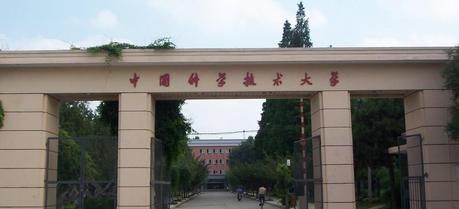 North gate of the East Campus of University of Science and Technology of China. (Credit: Ryanli http://en.wikipedia.org/wiki/File:Gate_of_USTC.JPG)
North gate of the East Campus of University of Science and Technology of China. (Credit: Ryanli http://en.wikipedia.org/wiki/File:Gate_of_USTC.JPG)A research group from the University of Texas at Austin led by Prof. Yu Guihua working in collaboration with a research team led by Prof. Xie Yi at the University of Science and Technology of China has achieved a breakthrough in the research on 2D graphene analogues. The newly discovered material is well suited for the design and fabrication of flexible solid-state thin-film supercapacitors with high energy density.

Schematic illustration of an as-fabricated flexible ultrathin-film pseudocapacitor, in which the VOPO4/graphene hybrid layers function as the working electrode and PVA/LiCl gel functions as the electrolyte. (Credit: See citation at the end of this article)
The electrical properties of graphene are being extensively researched for the wide range of potential graphene applications. For example, Monash University researchers have developed a completely new strategy to engineer graphene-based supercapacitors with energy density of 60 Watt-hours per liter—comparable to lead-acid batteries and around 12 times higher than commercially available supercapacitors. The potential of graphene for batteries becomes more apparent each day, with headlines touting new graphene electrodes and battery materials. Another promising venue of research lies in materials that are similar to graphene in their properties (graphene analogues).
As a possible future generation energy storage device, a flexible thin-film supercapacitor in all-solid-state offers the benefits of flexibility, thinness and transparency. Two-dimensional (2D) graphene-like materials with pseudocapacitive characteristics can be used to create a flexible ultrathin-film pseudocapacitor with high energy density, and potentially excellent mechanical flexibility. For that purpose the energy density of graphene-like materials needs to be increased. Therefore, new graphene-like pseudocapacitive materials with enhanced electrochemical performance are needed for construction of flexible thin-film supercapacitor suitable for the practical applications.
In an article published last month in Nature Communications, researchers reported 2-2-propanol-assisted ultrasonic method to effectively exfoliate bulk VOPO4·2H2O into VOPO4 ultrathin nanosheets, with a thickness of less than six atomic layers, as a new graphene-like material.
To fully explore the electrochemical performance of VOPO4, a VOPO4/graphene hybrid film was assembled layer-by-layer to achieve both high planar conductivity and better electrochemical performance. The material demonstrated a high output voltage, a large specific capacitance, a high energy density of 1.7 mW·h/cm−2 and a power density of 5.2 mW/cm-2.
The findings represent a promising direction and a significant step towards exploring new quasi-2D materials for flexible energy device with higher energy density in the near future.
Wu C, Lu X, Peng L, Xu K, Peng X, Huang J, Yu G, & Xie Y (2013). Two-dimensional vanadyl phosphate ultrathin nanosheets for high energy density and flexible pseudocapacitors. Nature communications, 4 PMID: 24026224
